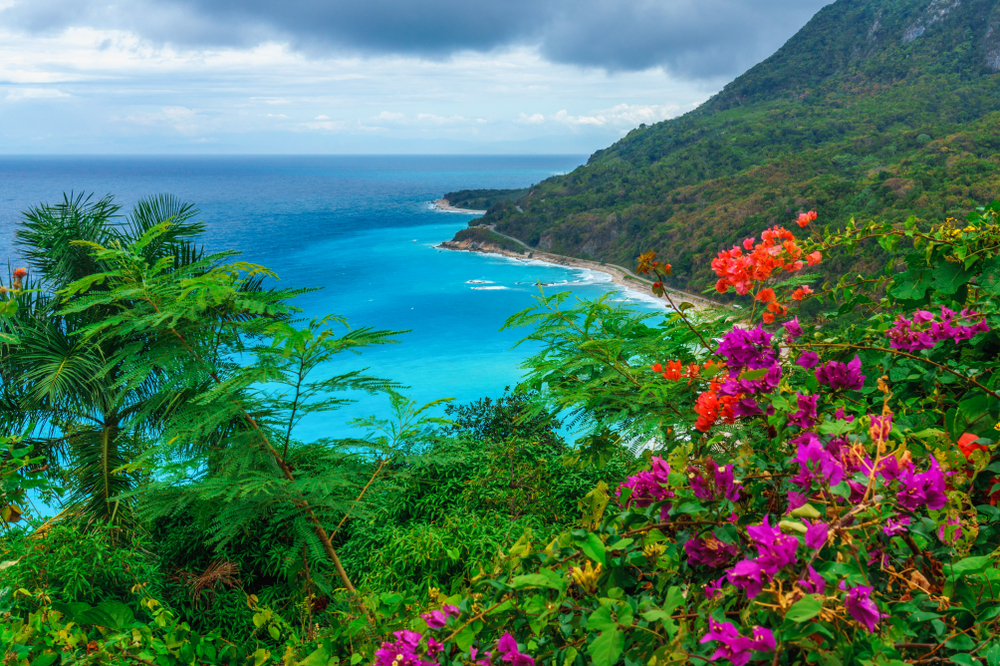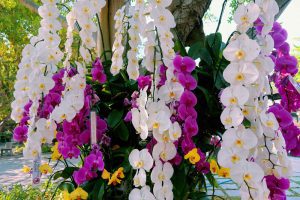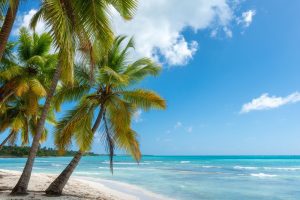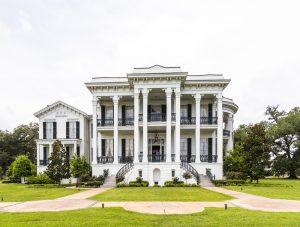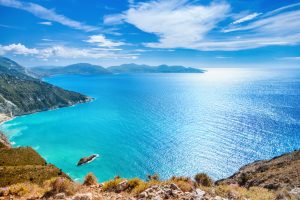The Dominican Republic is home to a variety of natural beauties, from its picturesque beaches to its lush mountains, but one thing that often gets overlooked is its breathtaking collection of flowers.
The tropical climate is a haven for a plentiful number of vibrant flowers with unique growing habits and stunning features.
While not all of the flowers you see in the Dominican Republic today are native to the land, successful naturalization has brought a diverse group of plants to the country.
During your visit, you will get to admire flowers that originate in other parts of the world like South America, Central America, Asia, and more.
Plus, the few flowers that are actually native to the Dominican Republic are truly remarkable and can be found in abundance.
And with four national parks within the country’s limits, it only makes sense that there are a plethora of flowers waiting for you within their midst.
Check out this list of the twelve types of flowers in the Dominican Republic so you know what to look for during your next visit.
Table of Contents
1. Isabel Segunda
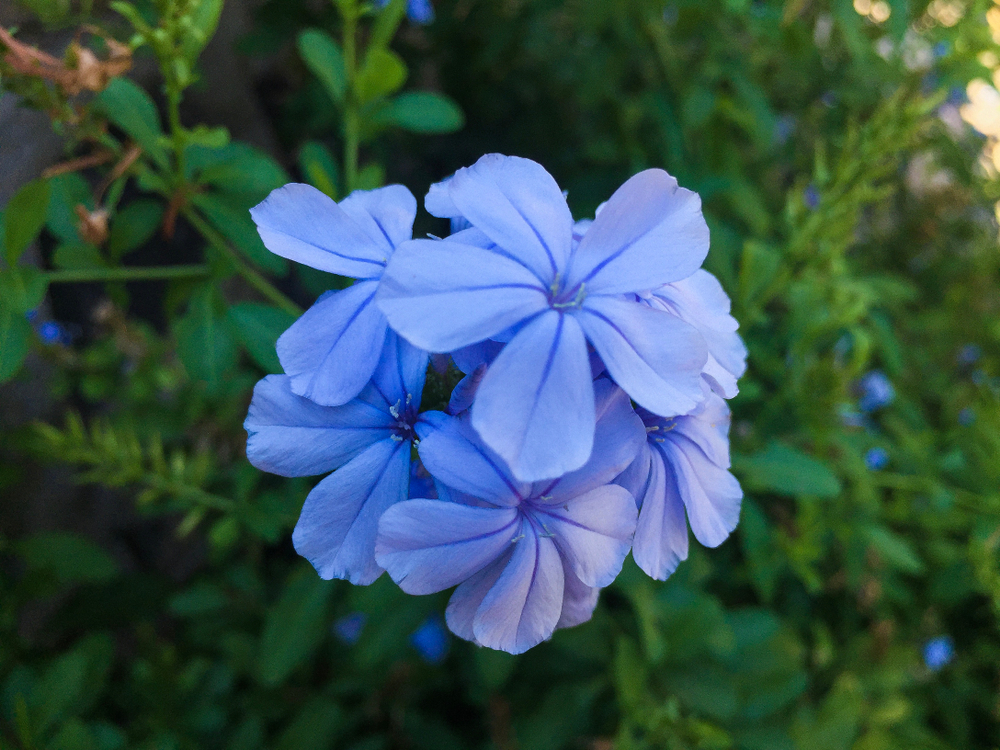
Also known as Jazmin Azul and Plumbago, the Isabel Segunda flower is one of the most popular plants in the Dominican Republic, and it is not hard to figure out why.
This beautiful flower boasts a vibrant blue color that can easily be spotted when venturing out to areas with natural greenery and when walking the streets of residential neighborhoods.
The Isabel Segunda is a dream house plant for many people around the globe, but its finicky growing habits can make it a difficult flower to care for.
Luckily, the Dominican Republic offers the perfect climate for the Isabel Segunda flower to thrive, so you will see it both inside and outside of locals’ homes.
Many people opt to grow this flower in large clusters that ultimately form a net-like system of vines to complement fences and walls.
And since this picturesque flower is native to the island, you can also admire Jazmin Azul when exploring some of the more untouched parts of the country. Just keep your eye out for the shocking blue color that gives the flower its name.
If you are lucky enough to stumble upon a field of the Isabel Segunda flowers, you will be rewarded with the smell of their delightful fragrance.
In fact, the sweet-smelling aroma is used in many perfumes today, so it would not be unusual if you’ve already smelt this wonderful scent before.
Aside from the Isabel Segunda flower’s color, it is also important to note that it can grow to become a shrub and it can reach a height of nearly fifteen feet if left unattended.
You may notice that there are other flowers that look almost exactly the same as the Isabel Segunda flower but bare white petals instead of blue.
This is a different variation of the Jasmine flower that can also be found in the Dominican Republic.
2. Trinitaria
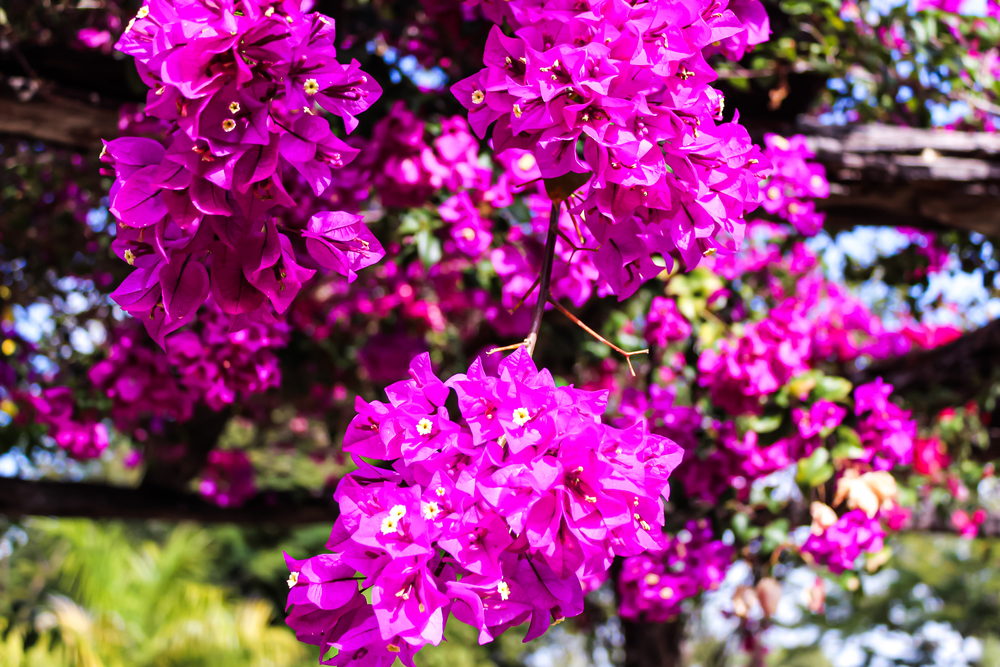
Although the Trinitaria flower is native to South America, it has made its way over to Caribbean countries like the Dominican Republic thanks to the country’s suitable climate.
At first glance, this type of flower is truly breathtaking, but after further observation, you will see that it is in fact within the family of thorny vines.
So, although you can spend hours admiring the varying color of its petals, you most definitely won’t want to go lay in the flowers or even attempt to pick one.
Given the opportunity, the Trinitaria plant can grow to an impressive height of forty feet and usually destroys any other source of plant life that gets in the way.
You will often see this type of flower climbing up the sides of houses to add an ornamental touch, but it is not uncommon to also find the Trinitaria flower in the wild.
This particular flower has a unique adaptation process where it becomes evergreen in areas with adequate rainfall and deciduous when exposed to long periods of dryness.
One of the features that make this flower so beautiful is how no two plants are exactly alike. Each plant boasts a series of white flowers that are accompanied by the occasional cluster of brightly colored petals.
These petals can be a series of colors ranging from pinks and purples to oranges and yellows.
This is in part due to the fact that this type of flower is one of the most popular, as well as one of the easiest, to crossbreed with other vine family plants.
With that in mind, the variation of the trinitarian flower you come in contact with may have different attributes, like a faster or slower growth rate.
It is also important to note that the sap that these flowers produce can be dangerous to humans and coming in contact with it can cause serious skin inflammation.
3. Duranta
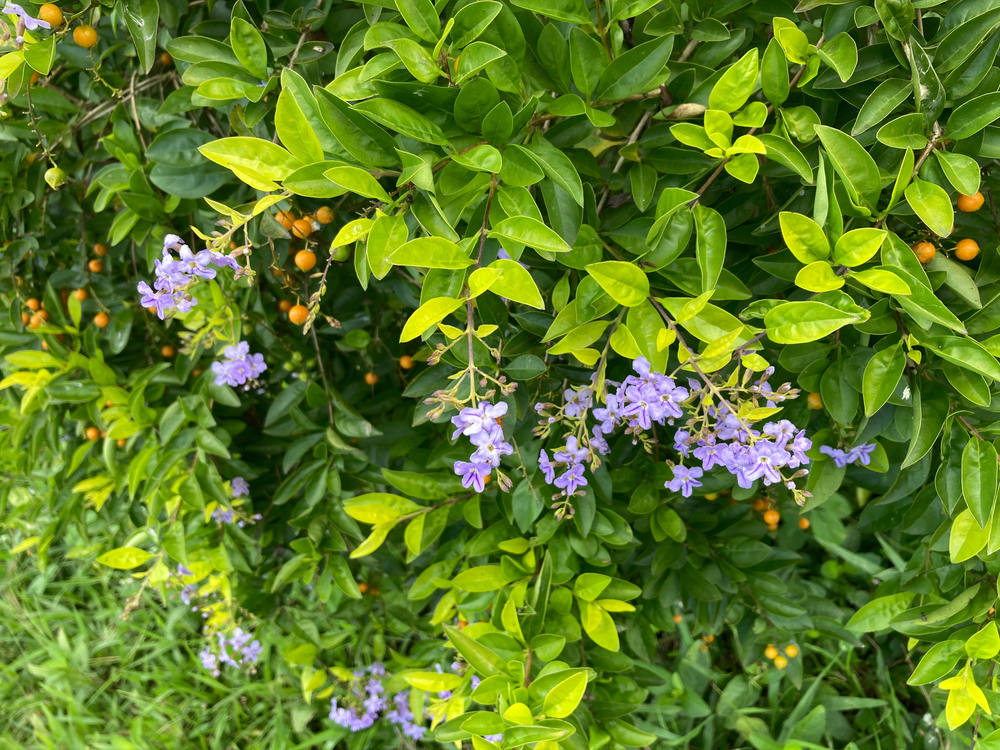
Native to countries all throughout the Caribbean, the Duranta flower is a staple of plant life in the Dominican Republic and is a prime example of the beauty that the country holds.
As the flower continues to grow, it develops a thick stem that gives it a small, tree-like appearance, and the growth of thorns also protects it as it matures.
This shrub can grow as tall as twenty feet and can also stretch out the same width which has made it a popular ornamental addition to locals’ homes.
The light green color of the leaves pairs well with the light blue flowers that, in a certain light, almost look like a shade of lavender.
Aside from the beauty of its petals and its grand size, the Duranta flower is also a popular ornamental flower for the fruit it grows and the wildlife that it attracts.
The flowers that bloom provide a haven for both butterflies and hummingbirds, so people will plant Duranta near their windows for a chance to enjoy the show. Its bright yellow berries only make the scene that much more beautiful.
If you are hoping to see this colorful flower out in the wild, make your way over to the coast where the plant thrives in both rocky and sandy terrain.
4. Saman
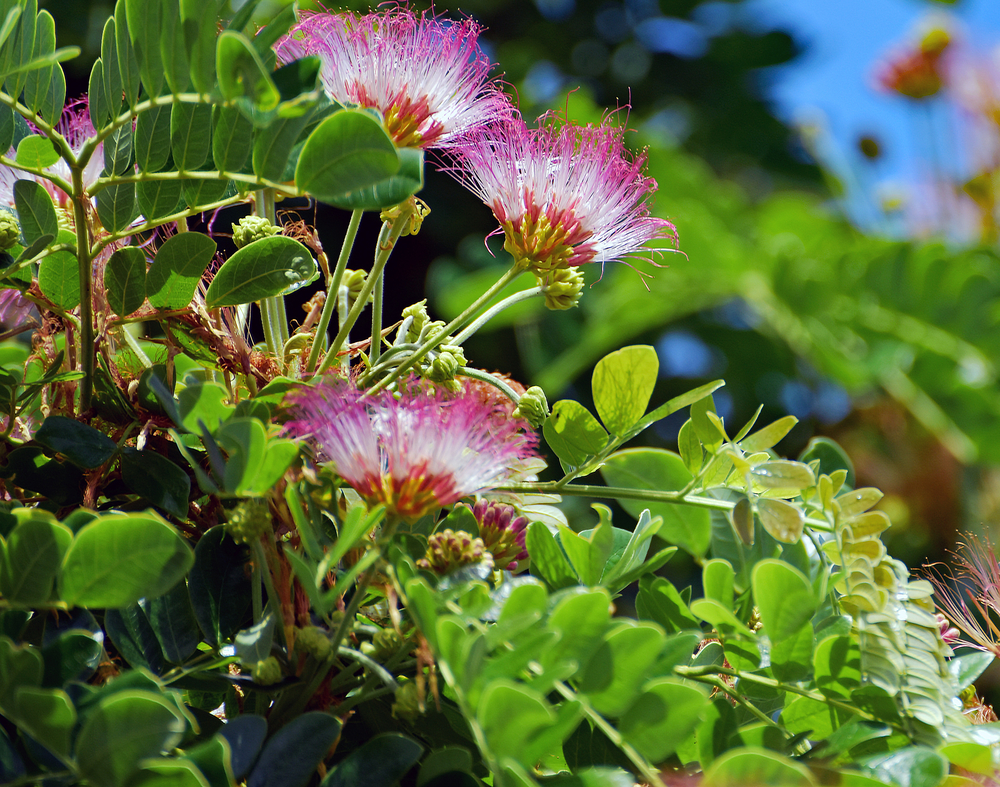
Growing on what is often referred to as the Rain Tree, the Saman flower is one of the most unique additions of plant species to the Dominican Republic.
This strange flower did not always call the country home; the Rain Tree and its flowers are originally from the tropical regions of South and Central America.
But soon after they were discovered, they were naturalized in areas with similar climates such as the Caribbean, the Pacific Islands, and Hawaii.
The Rain Tree is a tall-standing tree that can reach a height of nearly one hundred feet, but what is even more impressive is its canopy of leaves and flowers.
The canopy of leaves and flowers that flourish at the head of its trunk will usually grow to become even wider than the height of the tree.
It gets its name as the Rain Tree for the way the leaves will bend themselves down during a storm to allow direct access for the water to reach the base of the tree.
If this natural phenomenon isn’t enough to make you want to see this majestic tree, then the breathtaking flowers that grow on it ought to do the trick.
Unlike your typical flower, the pedals of the Saman flower are extremely thin and grow in large groups that create small fan-like structures.
These vibrant fans are usually bright pink in color and deepen in shade towards the end of the petals.
Each cluster of about twenty flowers is joined by one head, and there are thousands of heads on every tree so there is plenty of beauty to admire.
Because of its extensive width, you won’t usually see this as an ornamental tree, but it makes it easy to spot when exploring the more remote parts of the Dominican Republic.
5. The Bayahibe Rose
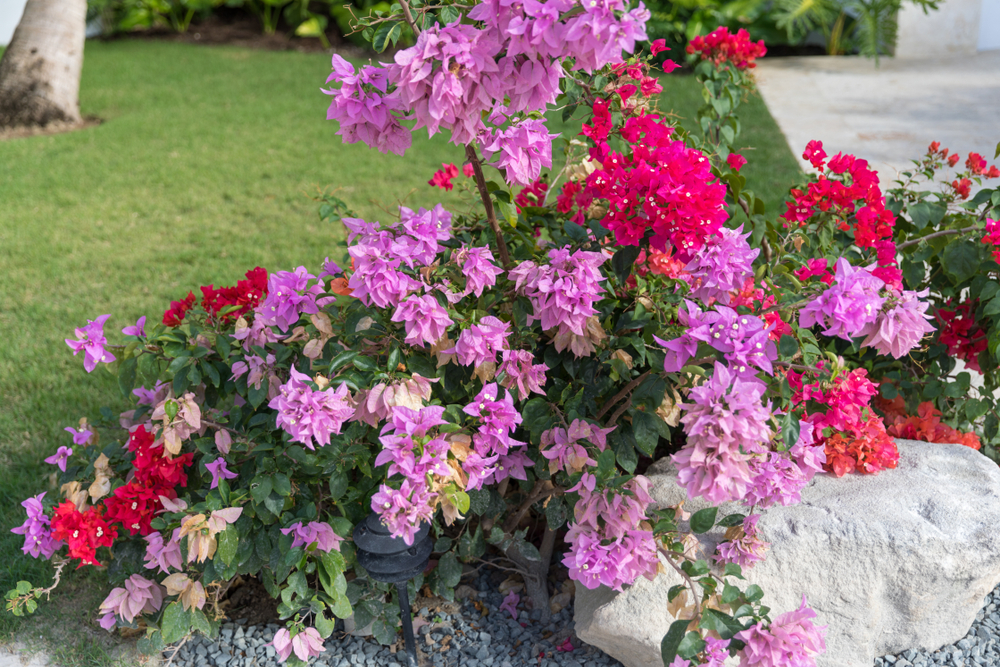
Also known as the flower of the Dominican Republic, the Bayahibe Rose can be found all over the country and its natural beauty is a sight to be seen.
This is one of the very few flowers that are completely native to the Dominican Republic and it gets its name from one of the local towns where it grows in abundance.
A visit to the town of Bayahibe will guarantee you the sight of this picturesque flower but if you aren’t visiting somewhere nearby, you can always go looking for some in one of the country’s subtropical dry forests.
Unfortunately, this beautiful flower is becoming harder and harder to find as the destruction of its natural habitat limits its ability to grow.
But anyone lucky enough to spot one of these special flowers in the wild will be blessed by the unique sight of its glossy, green leaves paired with vibrant pink petals.
Although this flower falls into the shrub category, it can grow to an impressive height of twenty feet.
And you would never guess that this flower is actually a species of cactus, given the fact that it has leaves rather than a thick, spiny stem.
However, one feature that gives this flower a cactus-like feel is the cluster of spikes that grow in small groups all around the base of the plant for protection.
Again, your best bet for seeing this unique flower is in the town that is its namesake, but there is always a small chance that it can be found elsewhere as well.
6. Mantequilla
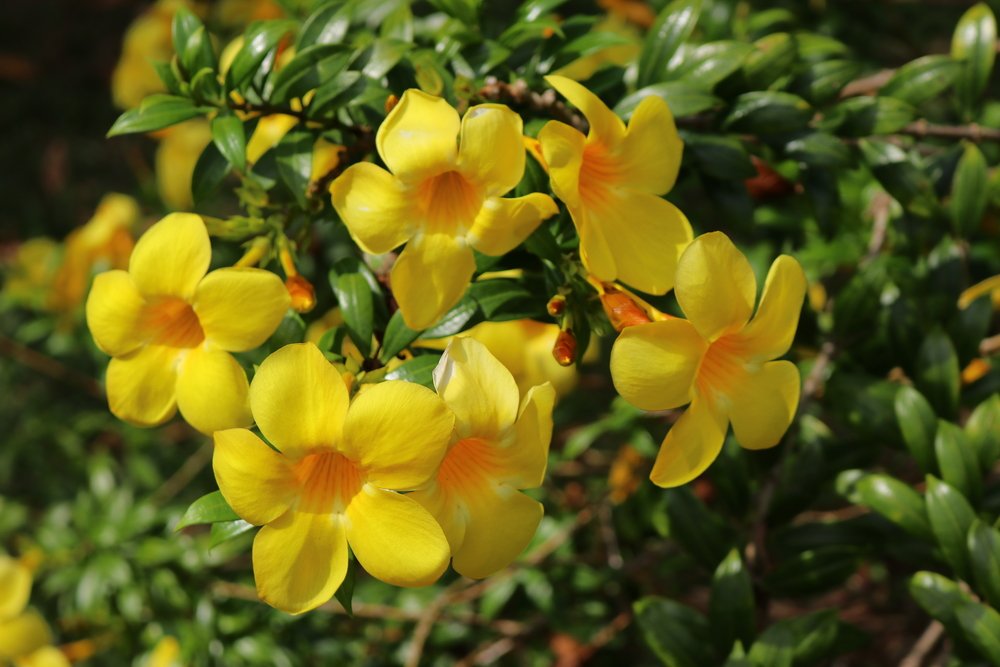
Originally native to Brazil, it didn’t take long for the Mantequilla flower to make its way over to the Dominican Republic, and it’s been flourishing there ever since.
In fact, the Mantequilla flower is one of the most popular options for ornamental features on locals’ lawns and along the grounds of resorts.
When left alone in the wild, this impressive flowering plant can grow to a height of nearly one hundred feet, but given the fact that it is mostly ornamental, the average height is more like forty feet.
Although it can withstand some environmental variation, the Mantequilla flower grows best in sunny locations, so you won’t usually find it in places with too much coverage.
It is often spotted bordering walkways and climbing up walls to add a bit of natural beauty to busy city streets and popular resorts.
The flowers are a striking yellow color, are shaped, like a trumpet, and frow in many small clusters along its stem.
This is also why it goes by some other names like the Golden Trumpet, the Common Trumpetvine, the Yellow Allamanda, and more.
7. Morivivi
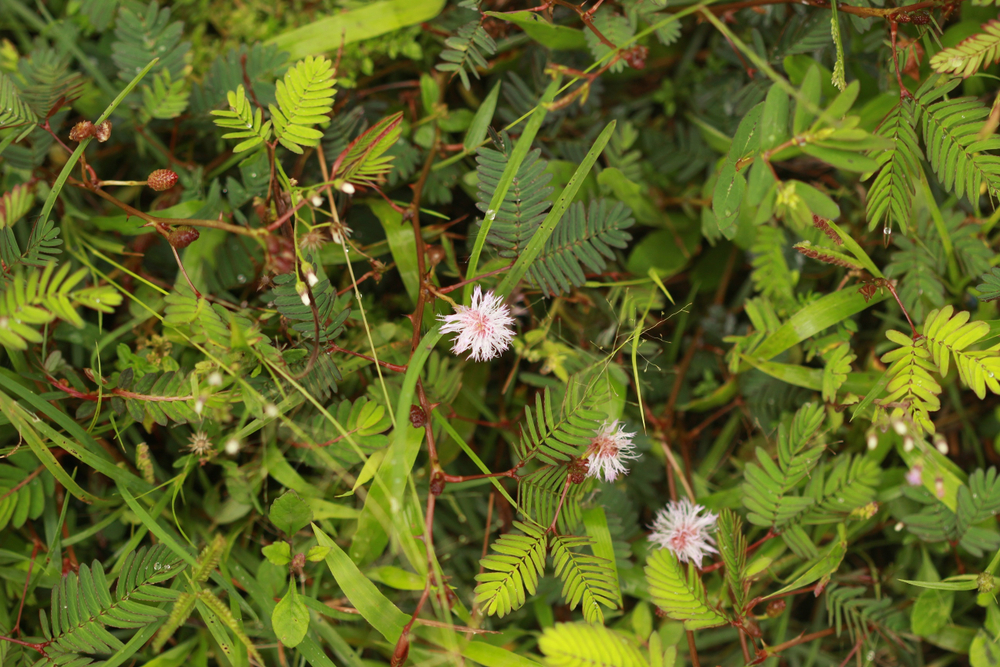
Known by a variety of different names, the Morivivi flower is one of the most unique plant species in the Dominican Republic, and it also just so happens to be one of the most beautiful.
The scientific name for this flower is technically Mimosa pudica, but when it’s not being referred to as Morivivi, it is usually being called the Shy Flower.
This is because the pedals of this unusual flower are extremely sensitive and will actually close up when anyone attempts to touch them.
But this isn’t the only time that the pedals move. The petals of this flower will also close when it gets dark since there is no sun to absorb, making it look like it is sleeping.
In fact, just about any kind of stimulus will cause this reaction from the petals, so you will often see children playing with this type of flower,
Although it can be fun to interact with the flower and watch how it reacts, remember to be careful because the stems of the Morivivi are filled with thorns.
Thick, thorn-peppered stems grow up to five feet and give way to an abundance of small flowers that are either pink or purple in color.
This type of flower is originally native to parts of Asia like India, Malaysia, Indonesia, and the Philippines, but it eventually made its way to many other parts of the world, including the Caribbean.
You may find this flower growing on its own in areas where the soil has been disturbed, but it is most commonly found within the homes of locals.
The Shy Flower has an extremely fragile growing habit and if certain needs are not met, it can rapidly die.
Since the Dominican Republic is known for its endless, sunny days, the Morivivi flower can flourish without the worry of cold temperatures or a lack of sun.
Some other names for this odd flower include the Sensitive Plant, Shameplant, Action Plant, Sleepy Plant, Touch-Me-Not Plant, and more.
8. Framboyan
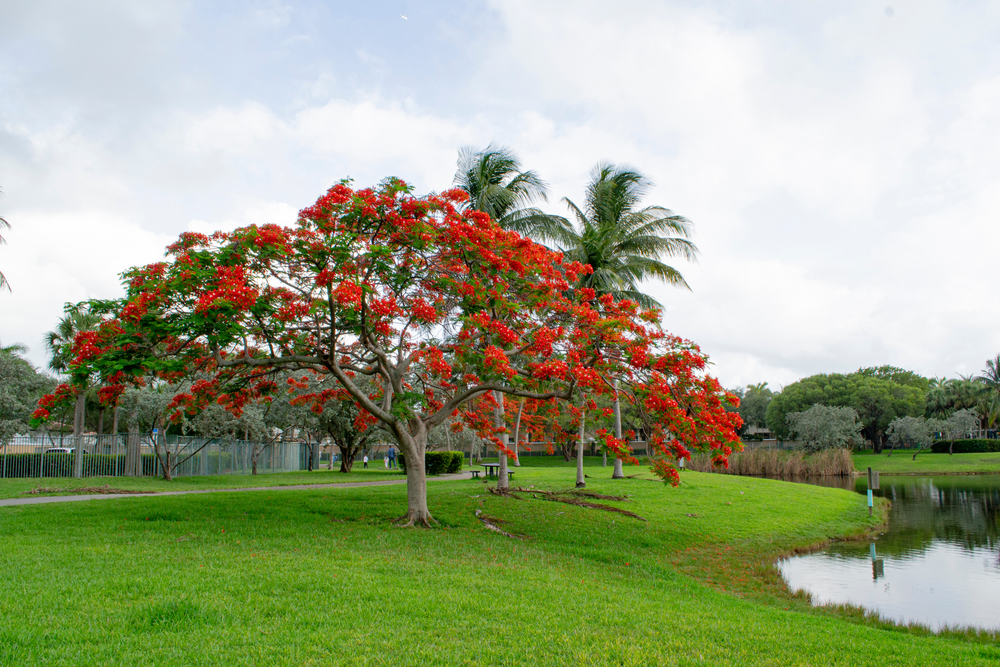
Although technically a tree, Framboyan produces some of the most beautiful flowers that have ever been brought to the Dominican Republic.
This majestic tree is originally from Madagascar, but its unmatched beauty brought it to other countries as quickly as people could get their hands on it.
The scientific name for this tree is actually Royal Poinciana, but most people will refer to it as either Framboyan or Flame Tree because of its color.
When looking at the shape of the flowers, you can see an uncanny resemblance to orchids because of the way that one of the four petals is longer than the rest.
You may find the occasional yellow flower, but for the most part, the flowers that grow on this tree are a remarkable orange or red color.
This is one of those trees that has an extensive canopy of leaves at the top of its trunk that is often much wider than the tree is tall.
During the summer months, the entire canopy is covered in flowers creating an impressive umbrella of orange and red color to admire.
The months in which the flowers bloom can vary depending on the climate, but records show that the flowers in the Dominican Republic reach their peak between the months of July and September.
It has such a beautiful array of flowers that you will find the tree featured in many paintings by local Dominican artists.
Although it is considered to be endangered in the wild, it is a popular ornamental tree that can be found in neighborhoods all throughout the country.
9. Brassia Caudata
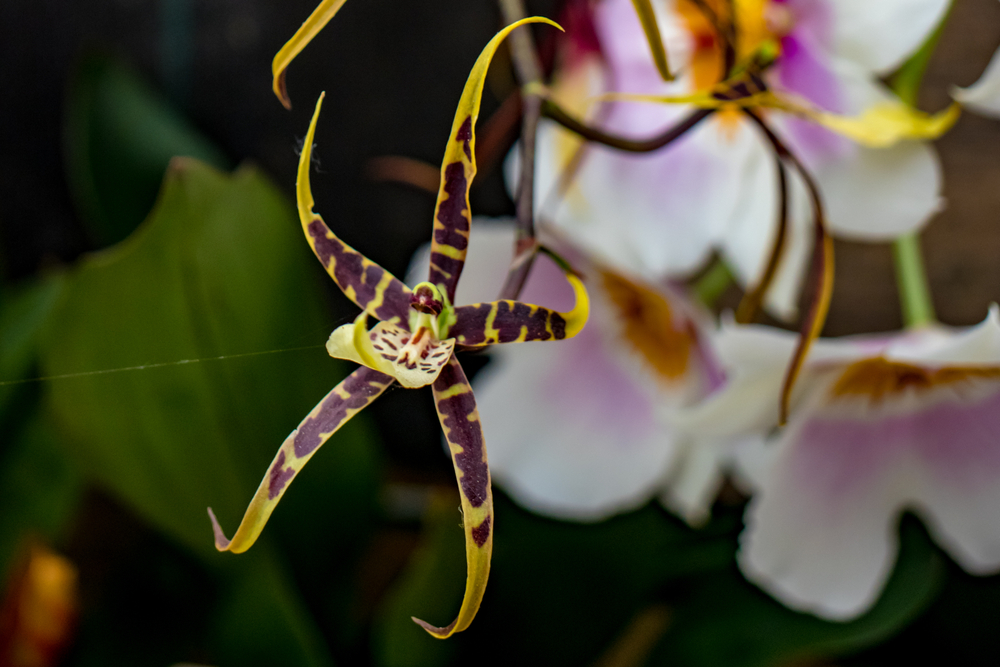
Often referred to as the Spider Orchid, the Brassia Caudata flower is a unique type of orchid that can be found both in the wild and as a houseplant throughout the Dominican Republic.
However, this particular type of orchid can be extremely difficult to maintain, so seeing one of these flowers is a rare treat.
One look at this flower and it is obvious why it has been nicknamed the Spider Orchid with its thin, lengthy petals that each out in opposite directions.
The orchid also has one, wide petal at the center that can easily be mistaken for the body of the spider, and these petals almost always have some sort of spots or definitive markings that make it look even more like an arachnid.
Aside from its unique shape, the Spider Orchid is also known for boasting a variety of different color patterns like yellow, green, and orange.
Although this type of flower is mainly native to Australia, there have been spottings in various warm, temperate countries like the Dominican Republic.
In fact, the Spider Orchid even has documented sightings in the West Indies, South America, Central America, and parts of North America.
10. Spiked Spiralflag Ginger
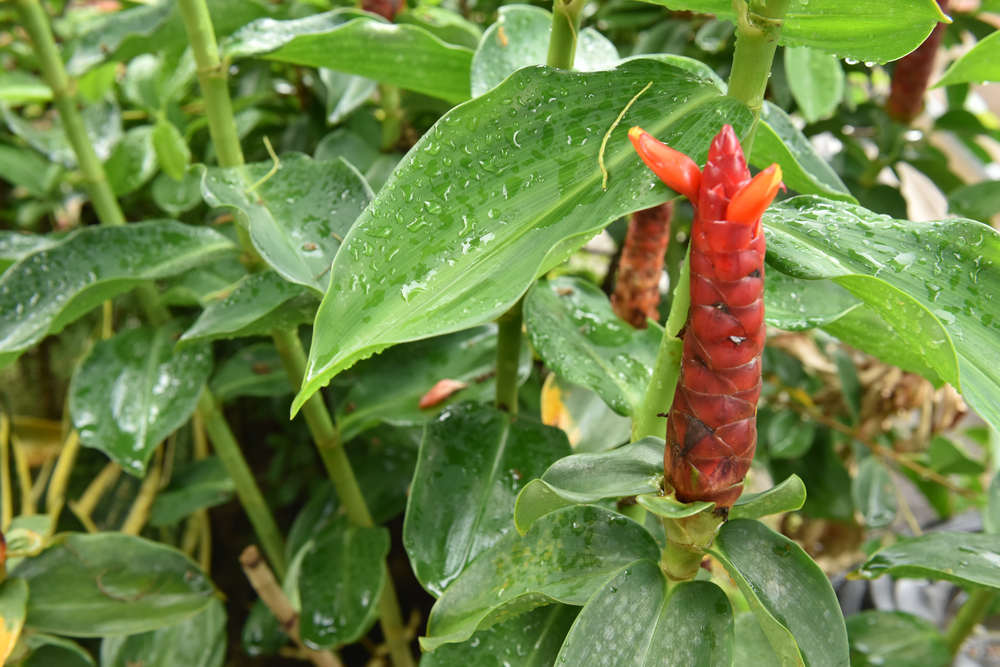
Easily one of the most unusual flowers in the Dominican Republic, if not the Caribbean as a whole, the Spiked Spiralflag Ginger is a sight you don’t want to miss.
This is one of the few flowers that are actually native to the Caribbean and can be found throughout many of its islands, including the Dominican Republic, Puerto Rico, Guadeloupe, and more.
The leaves that grow around the base of the flower can be over a foot long and will usually hang down in a way that drapes over the stem.
But the real showstopper is the flower itself, which at first glance looks nothing like a true flower at all.
There are hundreds of bulbs that are jam-packed together to create one massive cone-like shape, unlike any other flower you have seen before.
From the top of this giant cone, bulbs begin to bloom, one flower at a time, and create an even more beautiful sight as the bright red color of the closed bulb blends with the orange of the bloomed flowers.
This plant loves spending time in the sun, but it must be paired with a moist environment in order for it to thrive, so you will most often find it in areas with heavy rainfall.
If given all of the supplies that it needs to flourish, this unique plant can grow nearly ten feet in height, with much of that being the red cones of condensed bulbs.
This plant also played an important role in the Dominican Republic’s folk medicine, as it was believed that the leaves of the Spiked Spiralflag Ginger could help relieve the symptoms of diabetes.
Ultimately, it was proven that the leaves were not effective, but it still serves as a significant part of the Dominican Republic’s history.
11. Fuchsia triphylla
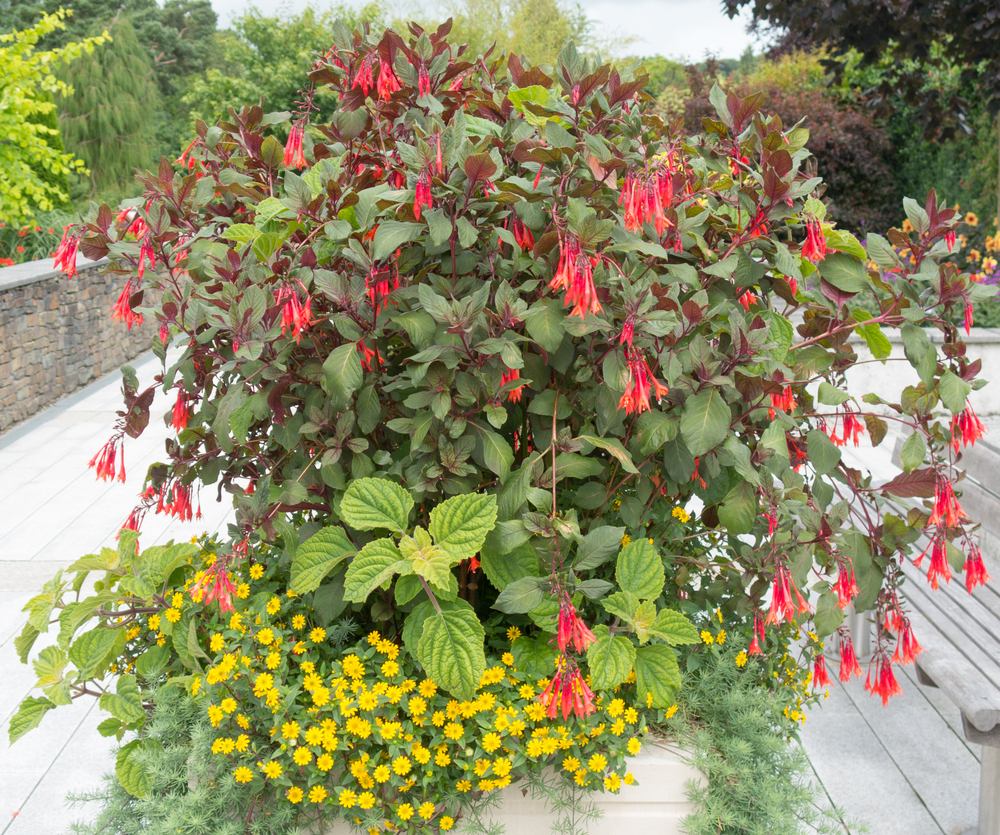
Considered one of the most popular plants for breeding because of its many appeals, Fuchsia triphylla is a beautiful flower that resides within the Dominican Republic.
But this flower is not naturalized here; it is one of the few flowers that are actually native to the Dominican Republic as well as its neighboring country, Haiti.
Aside from its natural beauty, the Fuchsia triphylla flower undergoes a lengthy blooming period which allows for viewers to admire its beauty for most months of the year.
The plant grows into a shrub-like structure with fairly basic leaves that are quite large in size, shaped like an oval, and boasts maroon-colored veins.
Unlike many of the other flowers in the Dominican Republic, the Fuchsia triphylla flower is shaped like a skinny tube and hangs downward.
These unusual flowers grow in dense clusters and sport vibrant colors like purple, red, and orange.
Since the stamens that produce pollen are the full length of the tubular flowers, this type of plant is especially popular with hummingbirds.
Many people will set up large planters around the outside of their homes and near windows so that they can admire the hummingbirds in action throughout the day.
12. Peregrina
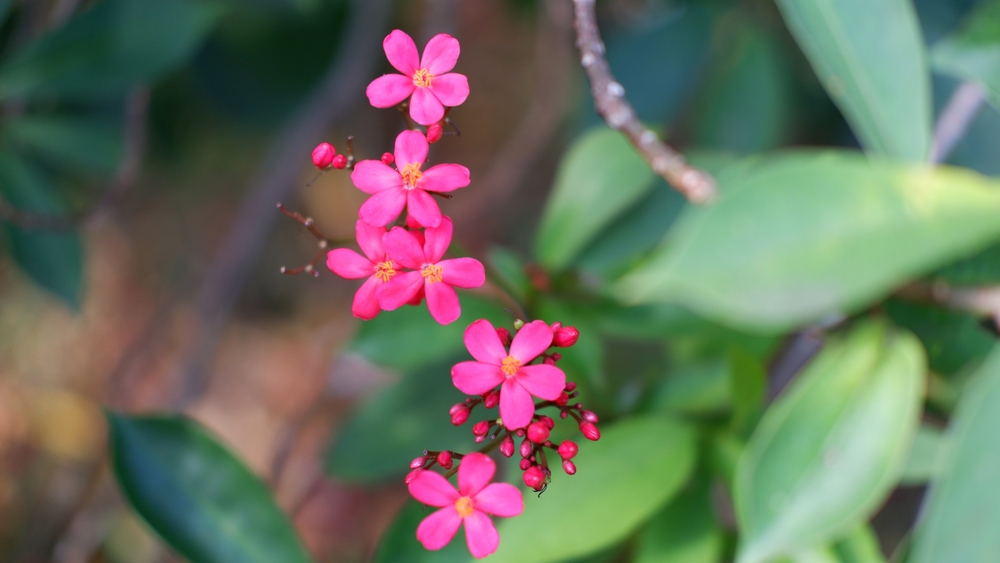
Although the Peregrina flower originated in Cuba, it can be found naturalized in all parts of the world including the Dominican Republic.
This type of flower grows on an evergreen shrub and if given the opportunity, can grow to an impressive height of fifteen feet and width of ten feet.
But since this flower has mainly become an ornamental piece, cultivation keeps the plant at an average height of about ten feet and its width can vary depending on the location.
The plant naturally has a series of slender trunks that lead up to glossy leaves where the flowers will bloom, but many people will prune the trunks to become one solid formation.
One unique feature of this flower is that its leaves don’t have one distinct shape but rather vary throughout the plant.
At the center of these half-foot leaves lies a cluster of pink flowers that don’t always bloom at the same exact time. This means you will see a combination of open and closed flowers.
Luckily, the flowers bloom all year round, so you never have to worry about a lull period as there are breathtaking colors to admire throughout the seasons.
The plant will also bear fruit at certain times throughout the year, but it is important that you never attempt to eat the fruit for any reason.
In fact, every part of this plant is extremely toxic, from its milky sap that causes severe skin rashes to seeds that contain poison.

